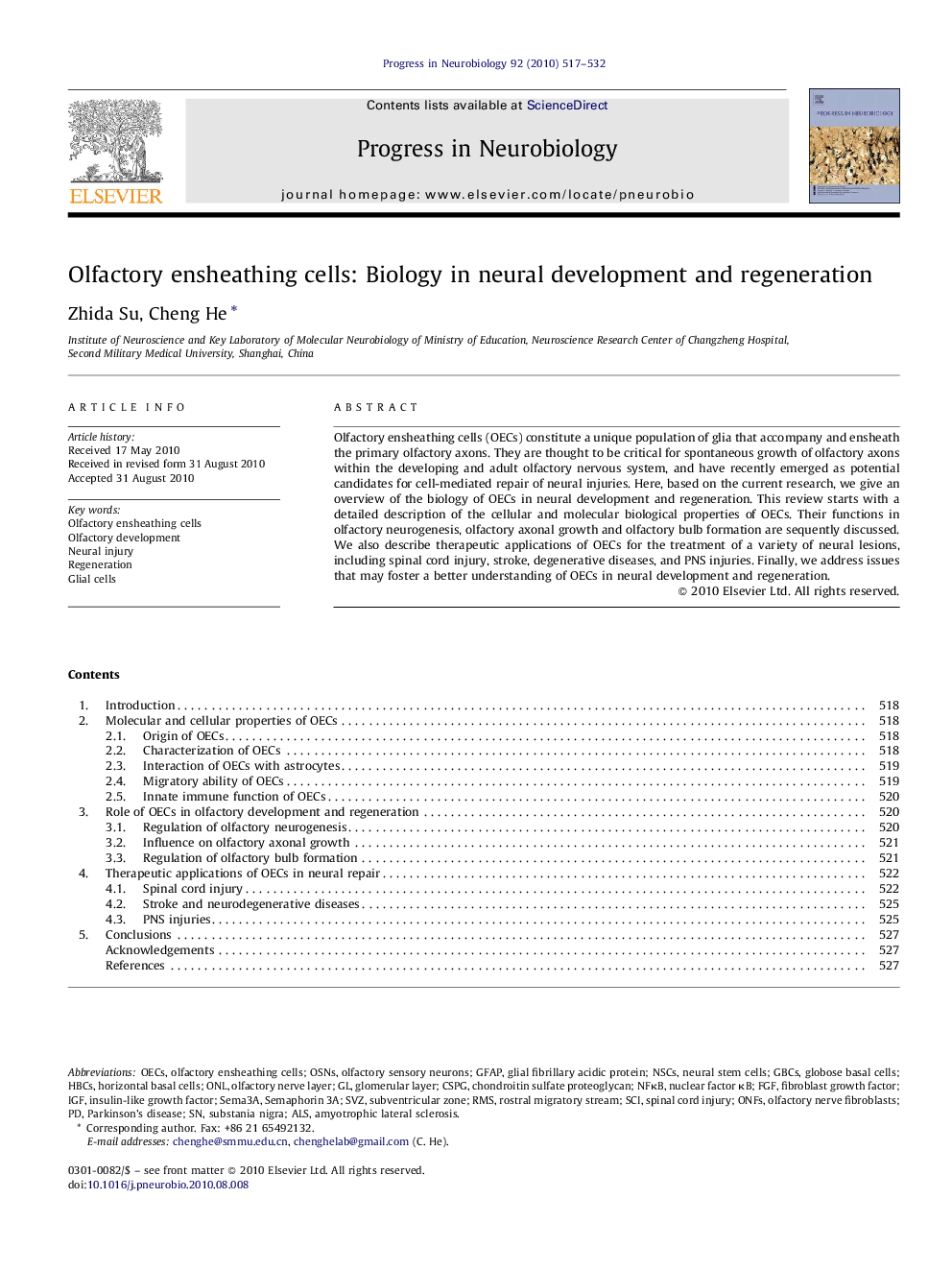| Article ID | Journal | Published Year | Pages | File Type |
|---|---|---|---|---|
| 4353521 | Progress in Neurobiology | 2010 | 16 Pages |
Olfactory ensheathing cells (OECs) constitute a unique population of glia that accompany and ensheath the primary olfactory axons. They are thought to be critical for spontaneous growth of olfactory axons within the developing and adult olfactory nervous system, and have recently emerged as potential candidates for cell-mediated repair of neural injuries. Here, based on the current research, we give an overview of the biology of OECs in neural development and regeneration. This review starts with a detailed description of the cellular and molecular biological properties of OECs. Their functions in olfactory neurogenesis, olfactory axonal growth and olfactory bulb formation are sequently discussed. We also describe therapeutic applications of OECs for the treatment of a variety of neural lesions, including spinal cord injury, stroke, degenerative diseases, and PNS injuries. Finally, we address issues that may foster a better understanding of OECs in neural development and regeneration.
Research highlights▶ Olfactory ensheathing cells (OECs) constitute a unique population of glia that accompany and ensheath the primary olfactory axons. ▶ They are thought to be critical for growth of olfactory axons within the developing and adult olfactory nervous system, and have recently emerged as potential candidates for cell-mediated repair of neural injuries. ▶ In this article we review current knowledge of OEC biology, including their molecular and cellular properties, and their role in olfactory development. ▶ We also describe therapeutic applications of OECs for a variety of neural lesions. ▶ This review, we think, may foster a better understanding of OECs biology in neural development and regeneration.
